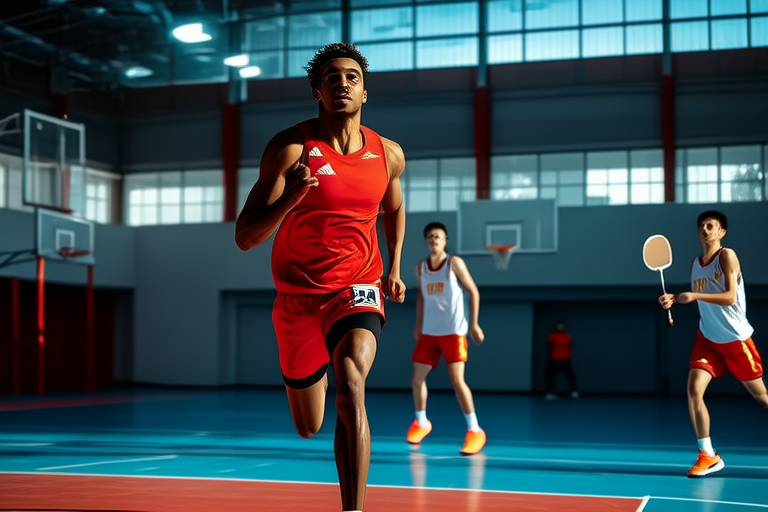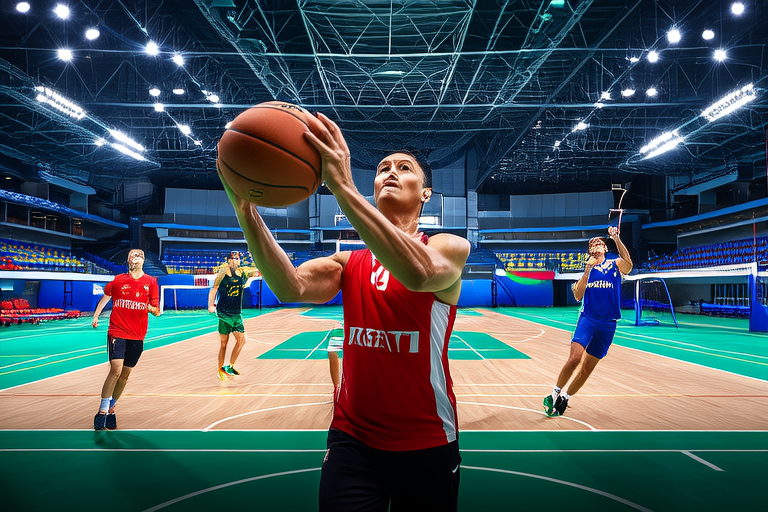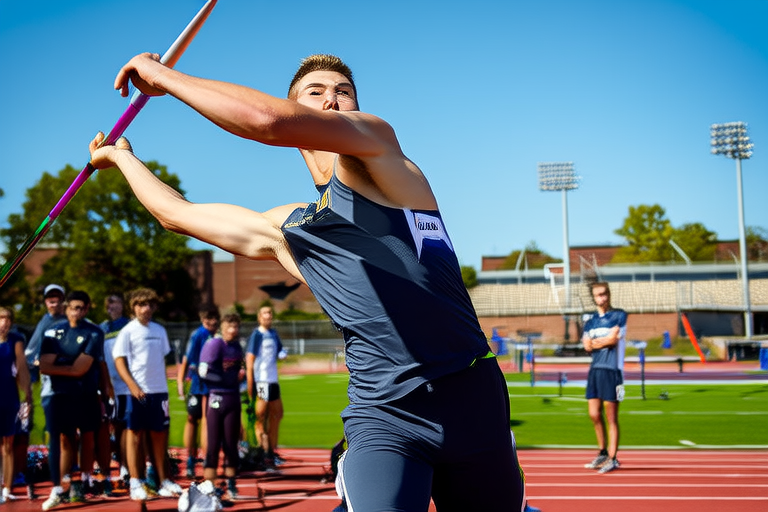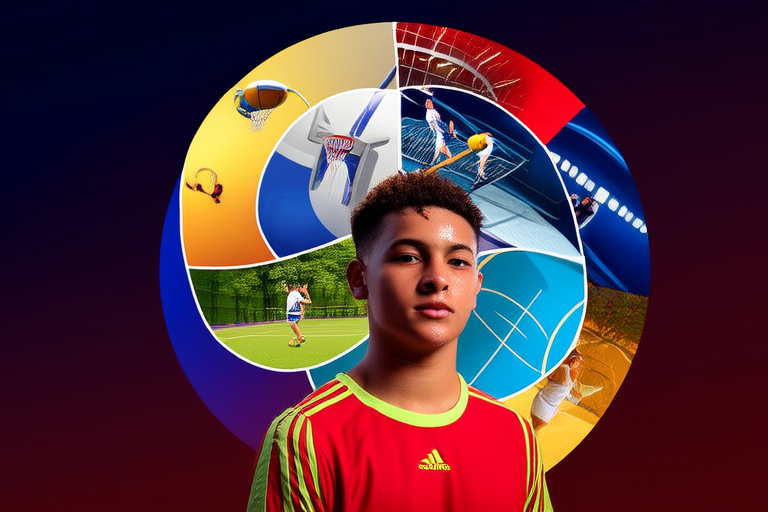Diverse World of Sports: Categories, Benefits, and Appeal
Sports have been an integral part of human culture for centuries. They offer numerous benefits, including improved physical fitness, enhanced mental health, increased social interaction, and valuable skill development. The variety of sports available ensures that there is something for everyone, regardless of age, gender, or physical ability. This article explores the different categories of sports, their unique features, and the benefits they provide.
Introduction
The world of sports is vast and diverse, encompassing a wide range of activities that cater to various interests and preferences. From team sports like soccer and basketball to individual pursuits such as running and cycling, sports can be categorized based on factors such as the number of participants, the setting, the level of physical contact, and the seasonality. Each category offers distinct advantages and appeals to different audiences, making sports an engaging and enjoyable activity for people of all ages.
Team Sports
Definition: Team sports involve multiple players working together towards a common goal. These games often require strategic planning, coordination, and communication among teammates. Examples include soccer, basketball, volleyball, and rugby.
- Physical Fitness: Team sports enhance cardiovascular endurance, muscular strength, flexibility, and balance. Regular participation helps maintain a healthy weight and reduces the risk of chronic diseases.
- Mental Health: Playing team sports promotes teamwork, leadership, and problem-solving skills. It also fosters positive self-esteem and self-confidence.
- Social Interaction: Team sports encourage socialization and the formation of strong bonds between teammates. They provide opportunities for networking and building lasting friendships.
- Skill Development: Participating in team sports helps develop essential life skills such as discipline, time management, and resilience. Athletes learn how to handle success and failure gracefully.
Unique Aspects: Team sports emphasize cooperation and unity, making them particularly appealing to individuals who enjoy group activities and teamwork. They offer a sense of belonging and shared accomplishment.
Individual Sports
Definition: Individual sports focus on personal performance rather than teamwork. These activities allow participants to compete against themselves or others while developing their own abilities. Examples include tennis, swimming, golf, and martial arts.
- Physical Fitness: Individual sports improve cardiovascular health, muscular strength, and flexibility. They also promote weight management and reduce stress levels.
- Mental Health: Engaging in individual sports encourages self-reflection, goal-setting, and perseverance. They help build mental toughness and emotional resilience.
- Social Interaction: While individual sports may not involve as much direct interaction as team sports, they still provide opportunities for socialization through competition and camaraderie.
- Skill Development: Individual sports foster discipline, focus, and concentration. Participants learn how to set and achieve personal goals, which translates into other areas of life.
Unique Aspects: Individual sports appeal to those who prefer solo activities or wish to challenge themselves without relying on others. They offer a platform for personal growth and self-improvement.
Indoor Sports
Definition: Indoor sports take place within enclosed spaces, often under controlled conditions. These activities are ideal for year-round participation and can be enjoyed regardless of weather conditions. Examples include badminton, table tennis, bowling, and rock climbing.
- Physical Fitness: Indoor sports contribute to overall fitness by improving agility, coordination, and reaction times. They also help develop specific muscle groups depending on the chosen activity.
- Mental Health: Participating in indoor sports provides an escape from daily stresses and promotes relaxation. They can serve as effective coping mechanisms for anxiety and depression.
- Social Interaction: Indoor sports often occur in communal settings, facilitating social interactions and the formation of new relationships. They provide opportunities for friendly competition and shared experiences.
- Skill Development: Indoor sports encourage precision, accuracy, and strategic thinking. Participants learn how to adapt to changing circumstances and refine their techniques over time.
Unique Aspects: Indoor sports are accessible year-round and can be enjoyed during inclement weather. They offer a safe and controlled environment for exercise and recreation.
Outdoor Sports
Definition: Outdoor sports take place in natural environments, exposing participants to fresh air and sunshine. These activities often involve elements of adventure and exploration. Examples include hiking, cycling, fishing, and camping.
- Physical Fitness: Outdoor sports improve cardiovascular health, muscular strength, and endurance. They also promote weight management and reduce the risk of chronic diseases.
- Mental Health: Spending time outdoors has been shown to boost mood and reduce symptoms of depression and anxiety. It provides a refreshing break from indoor routines.
- Social Interaction: Outdoor sports often involve group activities, fostering social connections and teamwork. They provide opportunities for bonding and shared experiences.
- Skill Development: Outdoor sports encourage adaptability, problem-solving, and decision-making. Participants learn how to navigate challenging terrains and overcome obstacles.
Unique Aspects: Outdoor sports offer a connection with nature and provide a sense of adventure and discovery. They appeal to individuals who enjoy exploring new environments and experiencing the great outdoors.
Contact Sports
Definition: Contact sports involve physical contact between players, requiring protective gear and adherence to safety rules. These activities test athletes’ physical and mental limits. Examples include American football, rugby, wrestling, and boxing.
- Physical Fitness: Contact sports build muscular strength, endurance, and cardiovascular fitness. They also improve coordination and balance.
- Mental Health: Engaging in contact sports promotes resilience, perseverance, and mental toughness. They teach athletes how to handle adversity and pressure.
- Social Interaction: Contact sports foster camaraderie and teamwork among players. They provide opportunities for bonding and shared experiences.
- Skill Development: Contact sports encourage strategic thinking, quick decision-making, and adaptability. Participants learn how to anticipate opponents’ moves and respond effectively.
Unique Aspects: Contact sports appeal to individuals who enjoy physical challenges and competitive environments. They offer a sense of excitement and adrenaline.
Non-Contact Sports
Definition: Non-contact sports do not involve physical contact between players, focusing instead on skill and technique. These activities prioritize safety and fair play. Examples include archery, billiards, darts, and fencing.
- Physical Fitness: Non-contact sports improve hand-eye coordination, fine motor skills, and balance. They also promote flexibility and cardiovascular health.
- Mental Health: Engaging in non-contact sports encourages mindfulness, concentration, and focus. They provide a calming and meditative experience.
- Social Interaction: Non-contact sports often involve social gatherings and competitions, fostering social connections and camaraderie. They provide opportunities for friendly competition and shared experiences.
- Skill Development: Non-contact sports foster precision, accuracy, and strategic thinking. Participants learn how to refine their techniques and improve their performance over time.
Unique Aspects: Non-contact sports appeal to individuals who prefer less physically demanding activities but still wish to engage in competition. They offer a peaceful and serene environment for exercise and recreation.
Winter Sports
Definition: Winter sports take advantage of cold weather conditions, offering unique opportunities for fun and exercise. These activities often involve snow, ice, or cold temperatures. Examples include skiing, snowboarding, ice skating, and curling.
- Physical Fitness: Winter sports improve cardiovascular health, muscular strength, and endurance. They also promote balance and coordination.
- Mental Health: Engaging in winter sports provides a refreshing change of scenery and promotes relaxation. They offer a break from routine and a chance to enjoy nature.
- Social Interaction: Winter sports often involve group activities, fostering social connections and teamwork. They provide opportunities for bonding and shared experiences.
- Skill Development: Winter sports encourage adaptability, problem-solving, and decision-making. Participants learn how to navigate challenging terrains and overcome obstacles.
Unique Aspects: Winter sports offer a unique seasonal experience and provide a sense of adventure and discovery. They appeal to individuals who enjoy cold weather and outdoor activities.
Summer Sports
Definition: Summer sports take advantage of warm weather conditions, offering opportunities for fun and exercise. These activities often involve water, sun, or heat. Examples include swimming, surfing, beach volleyball, and cycling.
- Physical Fitness: Summer sports improve cardiovascular health, muscular strength, and endurance. They also promote weight management and reduce the risk of chronic diseases.
- Mental Health: Spending time outdoors has been shown to boost mood and reduce symptoms of depression and anxiety. It provides a refreshing break from indoor routines.
- Social Interaction: Summer sports often involve group activities, fostering social connections and teamwork. They provide opportunities for bonding and shared experiences.
- Skill Development: Summer sports encourage adaptability, problem-solving, and decision-making. Participants learn how to navigate challenging terrains and overcome obstacles.
Unique Aspects: Summer sports offer a connection with nature and provide a sense of adventure and discovery. They appeal to individuals who enjoy exploring new environments and experiencing the great outdoors.
Extreme Sports
Definition: Extreme sports push athletes’ physical and mental limits, often involving high speeds, heights, or danger. These activities test courage and determination. Examples include skydiving, bungee jumping, skateboarding, and mountain biking.
- Physical Fitness: Extreme sports build muscular strength, endurance, and cardiovascular fitness. They also improve balance and coordination.
- Mental Health: Engaging in extreme sports promotes resilience, perseverance, and mental toughness. They teach athletes how to handle adversity and pressure.
- Social Interaction: Extreme sports often involve group activities, fostering social connections and teamwork. They provide opportunities for bonding and shared experiences.
- Skill Development: Extreme sports encourage adaptability, problem-solving, and decision-making. Participants learn how to anticipate opponents’ moves and respond effectively.
Unique Aspects: Extreme sports appeal to individuals who enjoy pushing their boundaries and experiencing thrills. They offer a sense of excitement and adrenaline.
Traditional Sports
Definition: Traditional sports have been practiced for generations, often reflecting cultural heritage and history. These activities vary widely across different regions and communities. Examples include cricket, sumo wrestling, polo, and lacrosse.
- Physical Fitness: Traditional sports improve cardiovascular health, muscular strength, and endurance. They also promote balance and coordination.
- Mental Health: Engaging in traditional sports promotes resilience, perseverance, and mental toughness. They teach athletes how to handle adversity and pressure.
- Social Interaction: Traditional sports often involve group activities, fostering social connections and teamwork. They provide opportunities for bonding and shared experiences.
- Skill Development: Traditional sports encourage adaptability, problem-solving, and decision-making. Participants learn how to anticipate opponents’ moves and respond effectively.
Unique Aspects: Traditional sports offer a connection to cultural heritage and history. They appeal to individuals who value tradition and want to preserve cultural practices.
Conclusion
The world of sports is incredibly diverse, offering a wide range of activities that cater to various interests and preferences. Whether you prefer team sports, individual pursuits, indoor or outdoor activities, contact or non-contact games, winter or summer pastimes, extreme adventures, or traditional customs, there is a sport out there for everyone. Each category provides unique benefits in terms of physical fitness, mental health, social interaction, and skill development. By exploring different types of sports, individuals can find an activity that brings joy, challenges, and fulfillment into their lives. The diversity and appeal of sports ensure that they remain an essential part of human culture for years to come.










